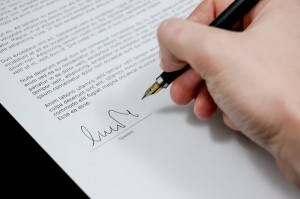ATF Form 4473: Five Common Problem Areas For FFLs
- What are some of the more problematic parts of the ATF Form 4473?
- What can FFLs do to protect their business?
- What are some best practices to deal with these problem areas and the ATF Form 4473 in general?
Federal Firearms License holders should become thoroughly familiar with the ATF Form 4473. The form was designed for essentially one purpose, to assist the FFL in determining if a potential transferee is prohibited from receiving firearms. Federal Firearms License holders are required to ensure the ATF F 4473 is properly filled out by the buyer/transferee, and the all required information is entered as required by regulation and the headings on the form.
Failure to properly execute the form will be considered a public safety violation by ATF. However, that in itself may not be the worst thing that could happen when FFLs fail to ensure the ATF F 4473 is properly used. FFLs must be cautious to properly examine the form, and ensure that no information contained indicates the buyer/transferee is a prohibited person. Failure to do this could cause you to unwittingly transfer a firearm to a prohibited person. Wise FFLs will view the ATF Form 4473 as their protection against such a transfer.
Obviously, there is always the possibility of a transfer to a prohibited person, especially if the transferee enters false or misleading information on the ATF F 4473. That’s why it’s crucial for FFLs to make sure they have fulfilled their responsibility under that law when transferring firearms.
Although FFLs should closely examine all parts of the ATF Form 4473 prior to the transfer of a firearm, there are certain sections more prone to errors than others. Some of the items below may seem trivial or inconsequential to some licensees. However trivial the items may seem, FFLs are required by law to ensure the form is properly executed; otherwise a violation may and likely will be issued for every instance the “trivial” element of the form is incorrect, incomplete or omitted.
Ultimately, it is in the FFLs best interest to implement quality control measures ensuring the ATF Form 4473 is accurately executed.
It is a mistake to view the ATF Form 4473 as just another government formality. The ATF F 4473 protects the FFL, as well as fulfills a statutory function.
The sections below refer to the ATF Form 4473 dated April 2012.
1) Proper Identification of the transferee – Common failures.
• Full middle name is not included
• Height, weight and gender are omitted
The identification section is designed to assist the FFL in identifying the person who presents themselves as the buyer/transferee, and all the elements required on the form must be in place.
2) Questions related to prohibited categories
Transferee/buyers will check “yes” to questions that if answered “yes” indicate the person is prohibited from possessing firearms. This section should be examined prior to transferring the firearms.
Items 11L and 12 can be confusing even for people who are fluent in English, the person filling out the form is likely not very fluent in English and will have trouble with the questions.
3) Certification
Transferees must certify that the information provided is true, but this section (Items 16-17) is often left blank. There are a number of reasons for this which can’t be addressed fully here. What’s important is that the FFL ensure the section is signed and dated by the transferee.
One common reason for failure in this area is that FFLs will have a buyer fill out the front of the form in order to have the information required for a NICS check with the intention of waiting to actually transfer a firearm on another day. Ultimately, the buyer will not sign the form because of an oversight.
FFLs should never do this. There could be number of complicated legal issues with proceeding with a transaction in this way, and therefore it should be avoided.
The transferee/buyer must always certify by signing item 16 and dating item 17, then and only then should the FFL proceed with contacting NICS for a background check. If the firearm is transferred on another day, the transferee/buyer must re-certify by signing in Item 24 and dating Item 25.
4) Section D: Incorrect or Blank
Items 26 – 29 (firearm identifiers) are often left blank or contain incorrect information. One common violation cited is a blank or incorrect serial number entry.
This error can usually be attributed to a couple of factors:
1) Licensee will leave the block blank intentionally because they don’t know what firearm will actually be transferred when the buyer returns to pick a gun on a later day. The FFL then forgets to enter the data.
2) One serial number is entered and another firearm is transferred in error.
3) A firearm is returned to the FFL because of a defect and the FFL fails to correct the form to show the correct serial number.
There’s no simple solution for these types of failures. FFLs must pay attention to these details. FFLs should conduct periodic audits of their forms and firearms log book entries for indications of deficiencies. Larger FFLs having the resources should make periodic audits for ATF compliance part of their overall quality assurance program.
5) Items 33-35 (Signatures and date transferred)
A common problem with this section relates to the date of transfer of a firearm. The date of transfer (Item 36). This block should indicate the day the FFL “transferred” the firearms to the transferee/buyer; the day the buyer took possession/control of the firearm. Although this seems pretty straight forward, this issue is a sore spot for many FFLs.
Common problems:
- The date does not match the date indicated in the A&D record as the date of disposition
- The date is left blank
- The transfer date occurs on a day after the transferee has certified, but no re-certification is completed. The transfer date should match the re-certification date in this instance.
Causes:
Usually related to the FFL leaving the item blank after complying with a state imposed waiting period or a delayed response from NICS.
FFLs will at times sign in Item 33 while conducting a transaction, but there is some sort of delay and the firearm is not transferred on that day. The FFL then forgets to complete the form.
This section should not be filled out until the FFL actually transfers a firearm. Take a minute and read the instructions right above this section so you can understand what the signature you are affixing to the ATF Form 4473 implies.
Remember that if a person has to come back to pick up a firearm, the FFL must re-verify the identity. In larger businesses where more than one person may assist a buyer, these issues become more relevant.

